I developed the Building a Fire tool in 2006 to enable self-assessment processes for grassroots organizations as an alternative to capacity assessment tools that focus on the formality of institutional systems. You can read more about the Building a Fire tool’s rationale and results here.
Directions for completing the tool follow. Feel free to use and adapt.
***
Building a Fire: Capacity Self-Assessment
Tool for Firelight Foundation Grantees
Organization:______________________________Date:__________
Explanation of the scale:
Please tick (X) participants’ view on the following statements.
Directions: These are the suggested basic steps for completing this self-assessment exercise within your organization or group:
- Before you start, identify the people who can meaningfully contribute to the exercise. Raise awareness and win support among staff, key volunteers, board members and/or other leaders or stakeholders who should participate. PLEASE NOTE: One person alone should not fill out this tool for your organization. Rather it should be a participatory process among your team.
- Determine how the exercise will be carried out. Will it be carried out during a quarterly community meeting? Or will individuals be asked to complete the tool and then the results are analyzed, shared and discussed during a weekly staff, committee or board meeting?
- Identify and assign specific tasks necessary to carry out the exercise, such as calling a meeting or arranging logistics. Identify who will have overall responsibility.
- When everyone is gathered for the exercise, introduce the scale and explain the meanings of boiling, bubbling, warming, and gathering the wood. Keep in mind that this tool can be used in written form or orally.
- Interpret, debate, and analyze the statements included in the tool. Participants should strive for open and honest communication to understand areas of strengths and weaknesses and reach conclusions on difficult issues. Record specific comments on your priority areas for capacity building under each section.
- The assessment process will often raise issues and highlight concerns as it proceeds. Be open to the discussions and be prepared to use this new information for the betterment of your organization.
- If done well, your assessment can form the basis of a capacity development plan driven by your organization. Identify priority areas for change and make a plan of action. This plan should include participants’ own recommendations based on the exercise and their experience. Most capacity assessments will identify a variety of actions, of which training is only one strategy.
Remember that discovering more about your own organization is the most important objective of this exercise. Using such a self-assessment tool never gives “the final word” on your capacity, but rather can be useful, interesting, and even inspiring! We hope you enjoy the experience and that it benefits your organization’s growth and development!


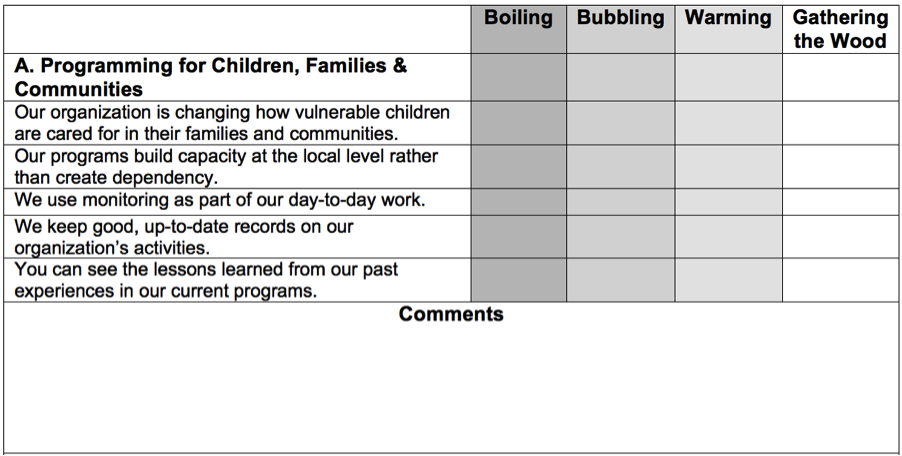
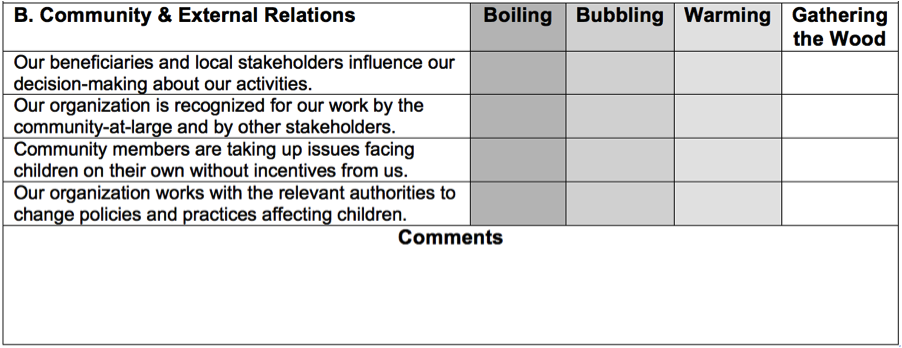
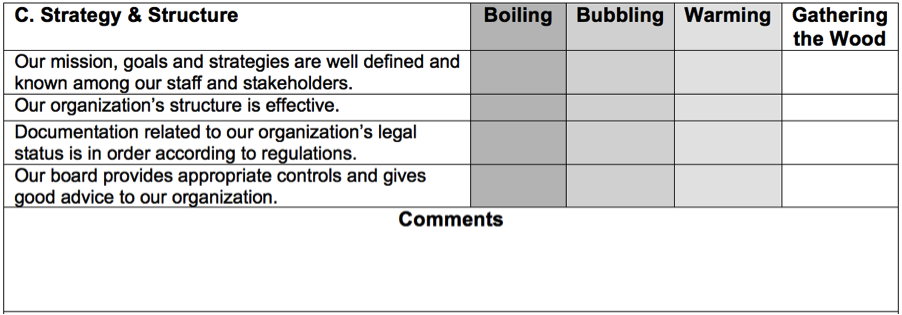
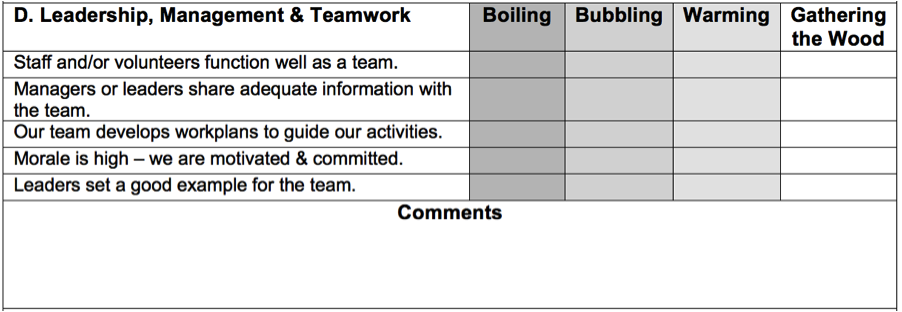
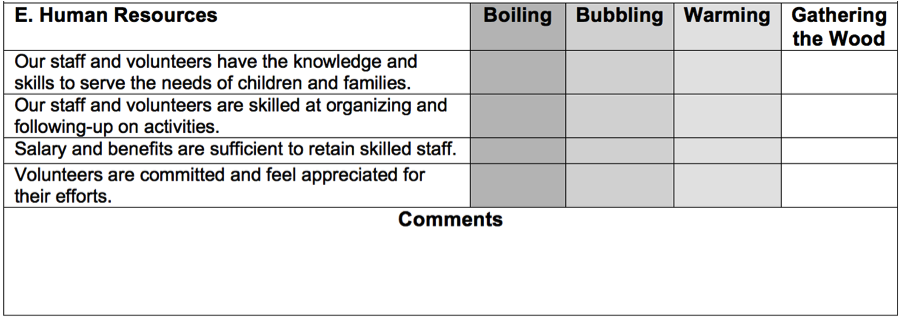
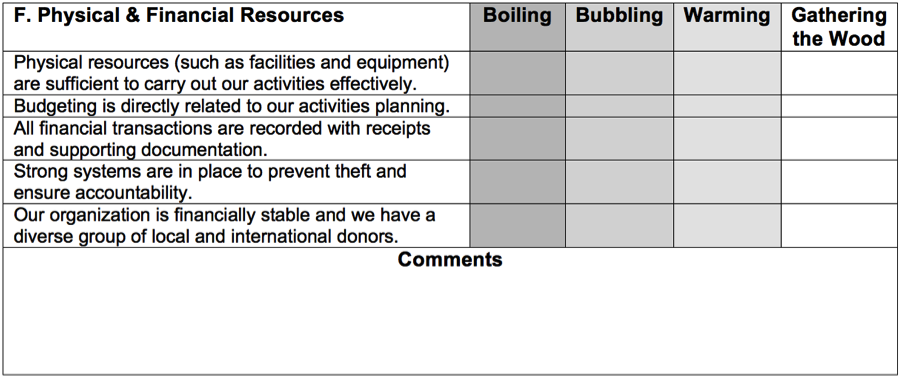
Pingback: Fundraisingwoche vom 28.04.-04.05.2014 | sozialmarketing.de - wir lieben Fundraising